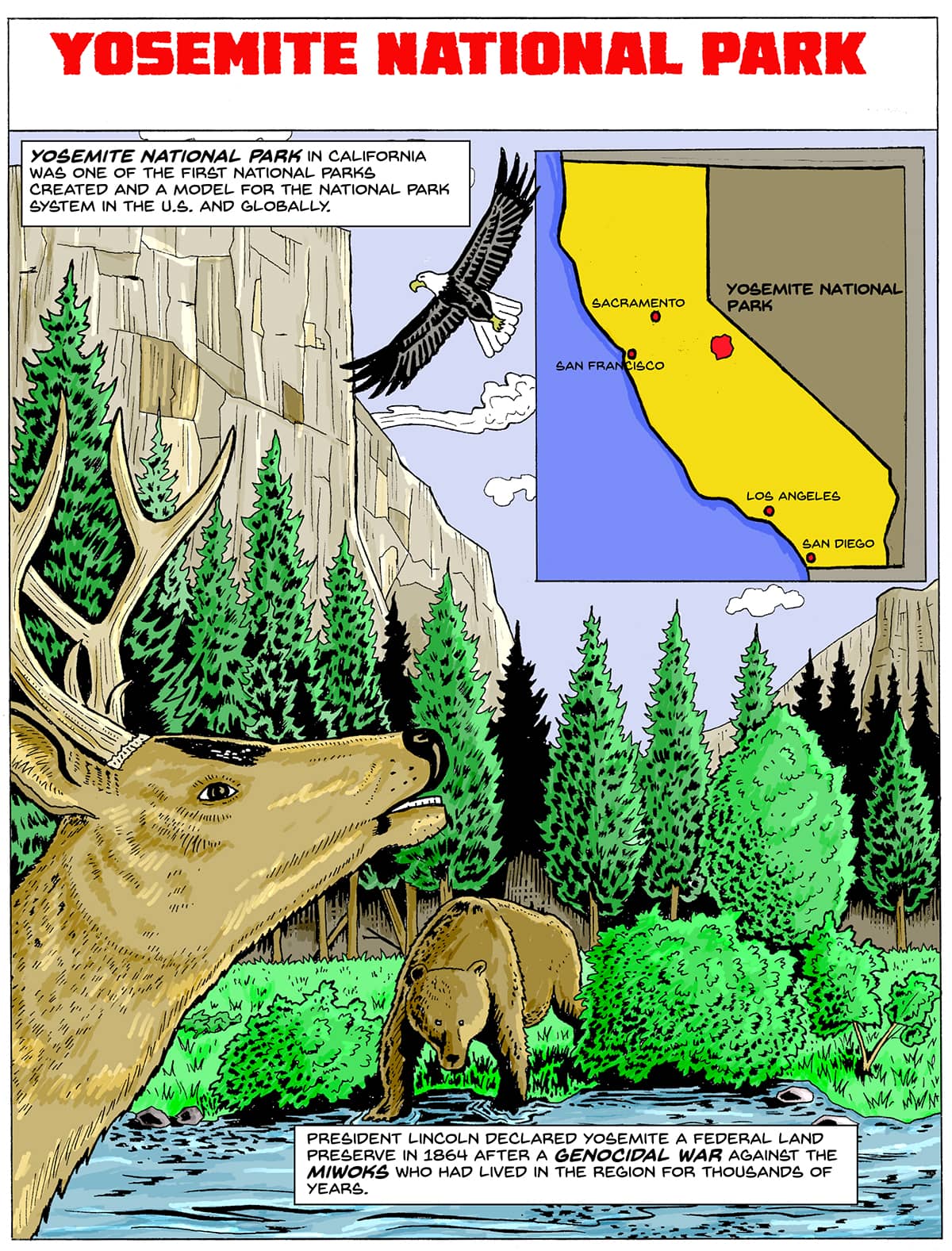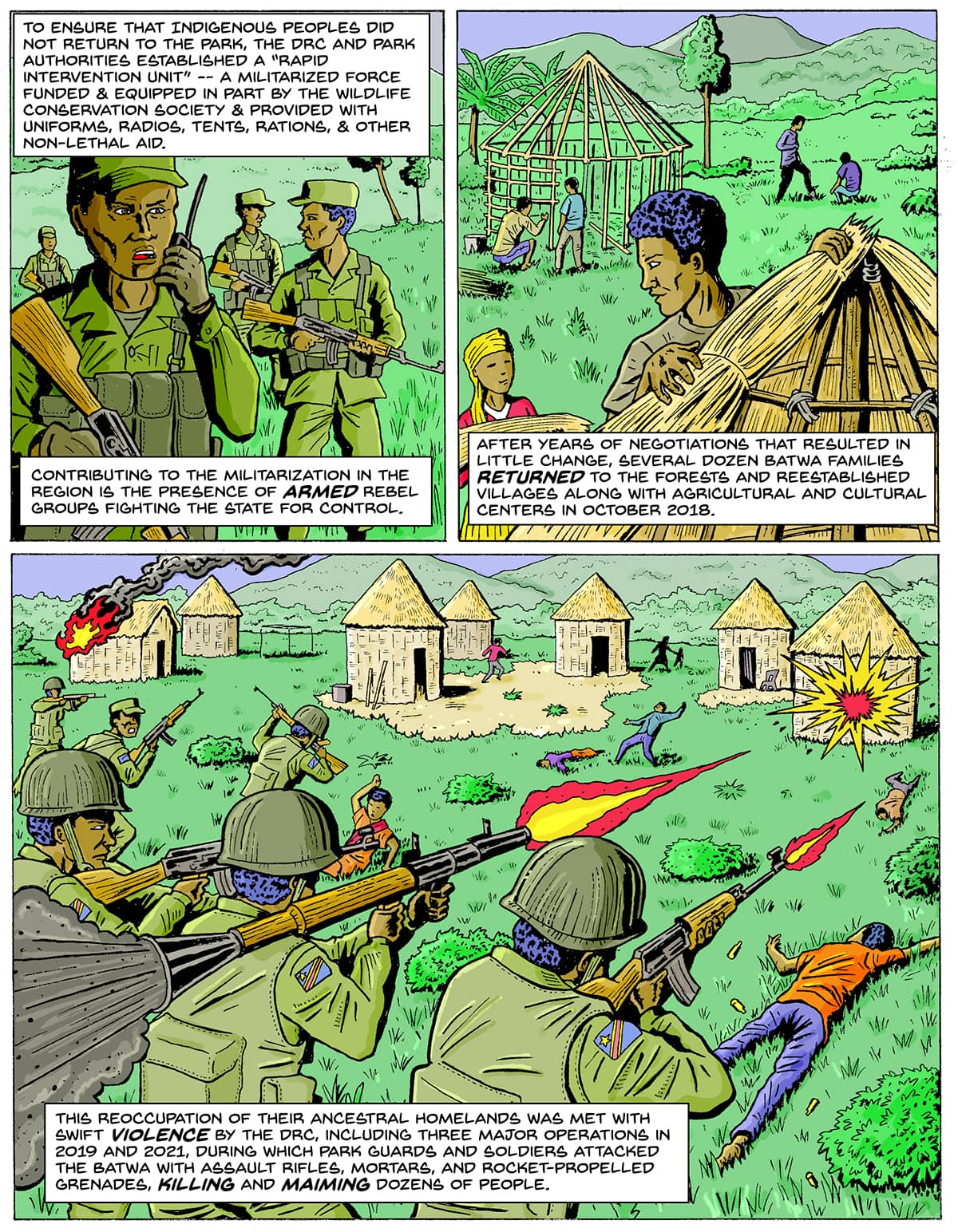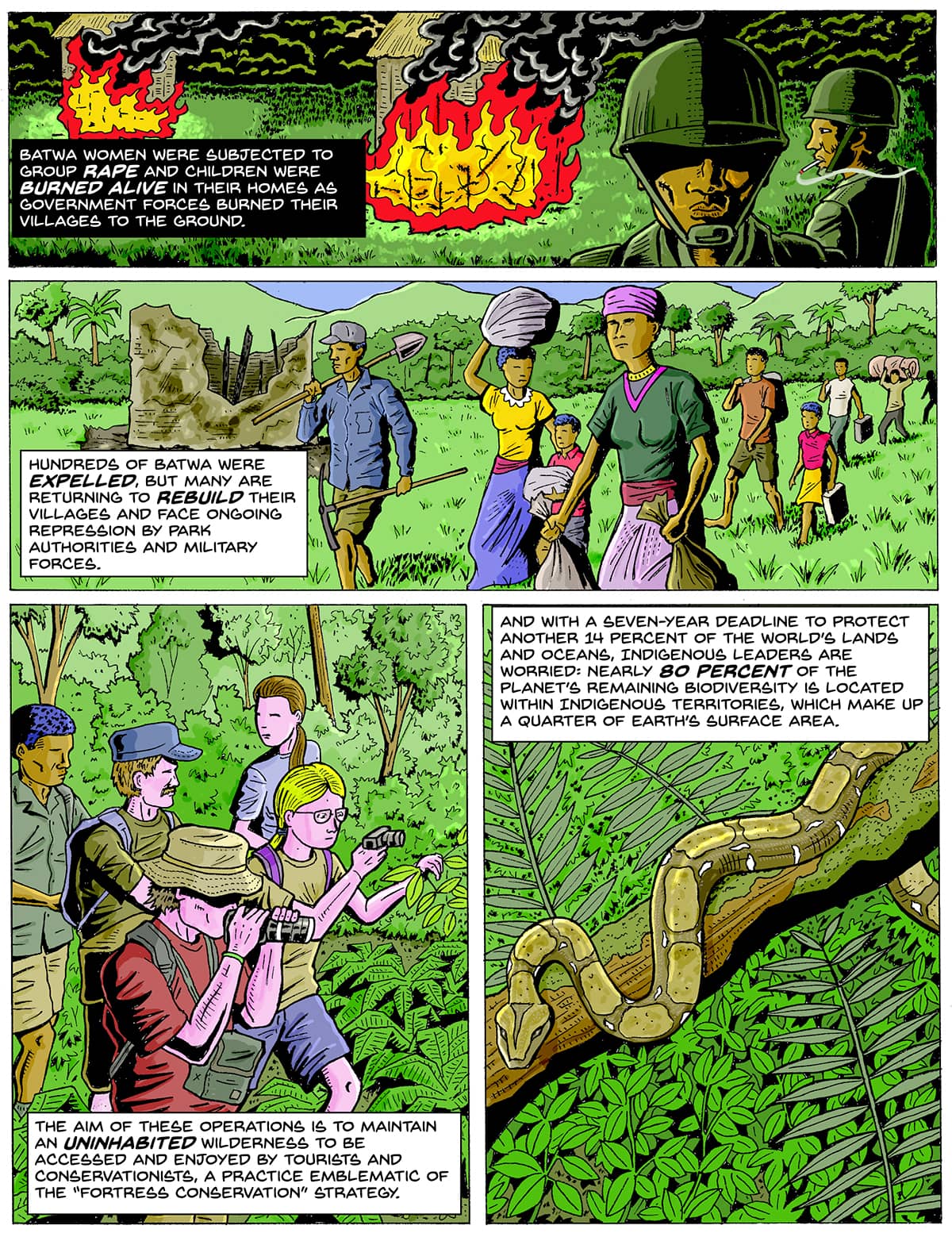This story is part of a Grist series on Indigenous rights and conservation. It is supported by the Bay & Paul Foundations and co-published with High Country News. Lee esta historia en español. Lisez cette histoire en français.









Transcript
Fortress Conservation: A Legacy of Violence
To conserve Earth’s biodiversity, many countries are pushing to protect more lands and oceans. Protected areas, a “geographically defined area which is designated or regulated and managed to achieve specific conservation objectives,” comprise roughly 16 percent of the world’s land.
That number is expected to double under 30X30, a global initiative to protect 30 percent of the planet’s land and oceans by 2030.
Many protected areas utilize a model called fortress conservation, which is based on the belief that such locations are best created without the presence of humans. Once established, newly protected areas force Indigenous communities to face evictions and violence at the hands of eco-guards. Since 1990, up to 250,000 people worldwide have been evicted from their homes for conservation projects. In the last century, close to 20 million.
Yosemite National Park
Yosemite National Park in California was one of the first national parks created and a model for the national park system in the U.S. and globally.
President Lincoln declared Yosemite a federal land preserve in 1864 after a genocidal war against the Miwoks who had lived in the region for thousands of years.
The war in Yosemite Valley had its origins in the California Gold Rush (1849-1851), when tens of thousands of settlers invaded the region in search of riches. Referred to as the California Genocide, the population of Indigenous peoples in the area plummeted from an estimated 300,000 to just 30,000.
The invasion of settlers in Yosemite sparked a series of confrontations, which culminated in the Mariposa War (1850-51). To fight the Miwoks, the state of California funded a militia, the Mariposa Battalion.
After a series of bloody raids and battles that saw dozens of Natives killed and their villages destroyed, the Miwoks surrendered in May 1851. Most of the survivors were forced to relocate onto reservations outside Yosemite Valley.
In 1890, conservationist John Muir led a movement that established Yosemite Valley as a national park, paving the way for the entire U.S. national park system. Hailed as a national hero, Muir was a racist who viewed the Miwoks as “most ugly, and some of them altogether hideous.” For a wilderness as pure as his holy Yosemite, “they seemed to have no right place in the landscape, and I was glad to see them fading out of sight down the pass.”
Despite their forced relocation, some Miwoks remained in Yosemite Valley or later returned, with many working in the tourism industry. Still, they faced subsequent evictions in 1906, 1929, and 1969, when the National Park Service dismantled their last homes.
In 2018, the park service granted Miwok tribal members access to their ancestral home inside the park, where they’ve built a traditional roundhouse and lodges for cultural ceremonies.
Kahuzi-Biega National Park
The Democratic Republic of the Congo, or DRC, established Kahuzi-Biega National Park in 1970. It expanded the park eight years later to include inhabited lowland areas, forcing the expulsion of the Batwa Indigenous peoples. The government has repeatedly employed armed park guards and soldiers to carry out these evictions, burning villages to the ground.
The Batwa, a semi-nomadic forest-dwelling people, faced decades of dispossession, poverty, malnutrition, disease, and skyrocketing mortality rates as a result of expulsion from their homeland.
The park was designated a World Heritage Site by the United Nations Educational, Scientific, and Cultural Organization, or UNESCO, and began receiving funding and support from the U.S. and Germany as well as non-governmental organizations, primarily the Wildlife Conservation Society.
Over time, the park became a militarized protected area and tourist destination, renowned for its wide diversity of plant, bird, and animal species.
To ensure that Indigenous peoples did not return to the park, the DRC and park authorities established a “rapid intervention unit” — a militarized force funded and equipped in part by the Wildlife Conservation Society and provided with uniforms, radios, tents, rations, and other non-lethal aid.
Contributing to the militarization in the region is the presence of armed rebel groups fighting the state for control.
After years of negotiations that resulted in little change, several dozen Batwa families returned to the forests and reestablished villages along with agricultural and cultural centers in October 2018.
This reoccupation of their ancestral homelands was met with swift violence by the DRC, including three major operations in 2019 and 2021, during which park guards and soldiers attacked the Batwa with assault rifles, mortars, and rocket-propelled grenades, killing and maiming dozens of people.
Batwa women were subjected to group rape and children were burned alive in their homes as government forces burned their villages to the ground.
Hundreds of Batwa were expelled, but many are returning to rebuild their villages and face ongoing repression by park authorities and military forces.
The aim of these operations is to maintain an uninhabited wilderness to be accessed and enjoyed by tourists and conservationists, a practice emblematic of the “fortress conservation” strategy.
And with a seven-year deadline to protect another 14 percent of the world’s lands and oceans, Indigenous leaders are worried: Nearly 80 percent of the planet’s remaining biodiversity is located within Indigenous territories, which make up a quarter of Earth’s surface area.
“While the expansion of protected areas to 30 per cent is a laudable target, not enough assurances have been given so far to indigenous peoples that their rights will be preserved in the process,” said José Francisco Calí Tzay, who is Maya Kaqchikel and the U.N. Special Rapporteur on the rights of Indigenous peoples.
“Real drivers of biodiversity decline, such as industrialization, overconsumption, and climate change, must be addressed. Simply enlarging the global protected area surface without ensuring the rights of indigenous peoples dependent on those areas is not the solution.”
*Correction (April 12, 2023): An earlier version of this story featured a section about the Alto Mayo forest in Peru. The section has been removed for conflating conflicts in the Alto Mayo Protected Forest with situations in the Cordillera Azul National Park and Cordillera Escalera Regional Conservation Area. Specifically, the section attributed the establishment of protected areas in Kichwa territories with a protected area where no Indigenous peoples are known to live. We regret the error, and have removed the section to avoid confusion.
Author and artist: Gord Hill is the author of two graphic novels, The 500 Years of Resistance Comic Book and The Anti-Capitalist Resistance Comic Book. He is a member of the Kwakwaka’wakw nation whose territory is located on northern Vancouver Island and adjacent mainland in the province of British Columbia. He has been involved in Indigenous people’s and anti-globalization movements since 1990. He lives in Vancouver.
This project was supported by the Bay & Paul Foundations
- Editors: Tristan Ahtone & Chuck Squatriglia
- Researcher: T. Khurana
- Copy editor: Kate Yoder
- Spanish translation: Nathalie Herrmann
- French translation: Leah Powers
- Additional art direction: Mignon Khargie
License: ©2023 Grist
Interested in republishing this story? Please reach out to syndication@grist.org.




